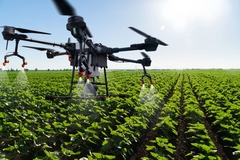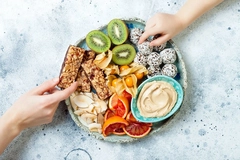Rising food prices the second biggest contributor to UK inflation as milk, oil and cheese at all-time high
17 Nov 2022 --- UK prices of staple foods such as milk, oil, eggs, pasta and cheese have surged on a month-to-month basis since October 2021 and are now at their most expensive, with no clear indication of when the price surge will abate or plateau.
The price hikes have been more aggressive than at any other time in the last four decades. Food price inflation has risen to 16.2% in the year to October, according to the Office for National Statistics (ONS). This demonstrates a 1.7% increase since September.
“UK food prices, as measured by the Consumer Prices Index (CPI), have increased each month since October 2021. There are likely to be a range of inflationary factors contributing to these rises,” Andy King, head of consumer price inflation production and user engagement at the ONS, tells FoodIngredientsFirst.

“They include increased transportation costs following an increase to the cost of diesel fuel, rising energy prices affecting the cost of maintaining the stores and ensuring food products are stored at the correct temperatures and conditions, the exchange rate; and the impact from the war in Ukraine on the global markets,” he says.
Bracing for an upward trajectory
The prices of margarine and cereals are still rising, with the ONS indicating that food prices had risen sharply in October.
The annual rise in CPI for low-fat milk was the highest, with an increase of more than 47.9%, followed by 42.1% for margarine and more than 34% for pasta. Oils and fat prices rose by more than 33%.
“We collect product prices from supermarkets, retailers and other outlets or from online or administrative sources. Unfortunately, we do not receive information as to why prices have risen,” King explains. Milk, oil, eggs, pasta and cheese prices have consistently risen monthly this year. In the last 12 months, food and non-alcoholic beverage prices rose by 16.4%.
Milk, oil, eggs, pasta and cheese prices have consistently risen monthly this year. In the last 12 months, food and non-alcoholic beverage prices rose by 16.4%.
Milk, oil, eggs, pasta and cheese prices have consistently risen monthly this year. In the last 12 months, food and non-alcoholic beverage prices rose by 16.4%.
The surge in costs of global commodities have been primarily driven up by the Ukraine war that has hindered supplies of sunflower oil, while further driving up animal feed and wheat prices – causing knock-on effects on meat, dairy and bakery.
The surging cost of living is squeezing household budgets, leaving many people facing hardship, naturally hitting poorer households the hardest, who spend approximately half of their income on food and energy compared with a third for middle-income families, the ONS reports.
Food prices, the second biggest CPI contributor
Rising food prices made a large upward contribution to change, with transport making the largest, partially offsetting, downward contribution to the change in the rates. The second largest upward contribution to the change came from rising food prices.
Food and non-alcoholic beverage prices rose by 16.4% in the 12 months to October 2022, up from 14.6% in September 2022. The annual inflation rate for this category has continued to rise for the last 15 consecutive months, from negative 0.6% in July 2021.
The current rate is estimated to be the highest since September 1977, when the food and non-alcoholic beverages annual inflation rate was 17.6%, as presented in the consumer price inflation extended historic series.
According to the ONS, overall food and non-alcoholic beverage prices rose throughout 2022. Despite prices rising more slowly between August and September at 1.1%, there was a resurgence in the monthly increase between September and October. Prices increased by 2%, the second monthly increase of 2% in the year.
The global forecast shows that some countries are starting to see cost moderation, albeit prices remain historically high.
However, consumers and companies should prepare for years of price fluctuations and unforeseen market disruptions. Experts claimed that knowing the path ahead, while not easy, can be seen as an advantage.
By Inga de Jong












